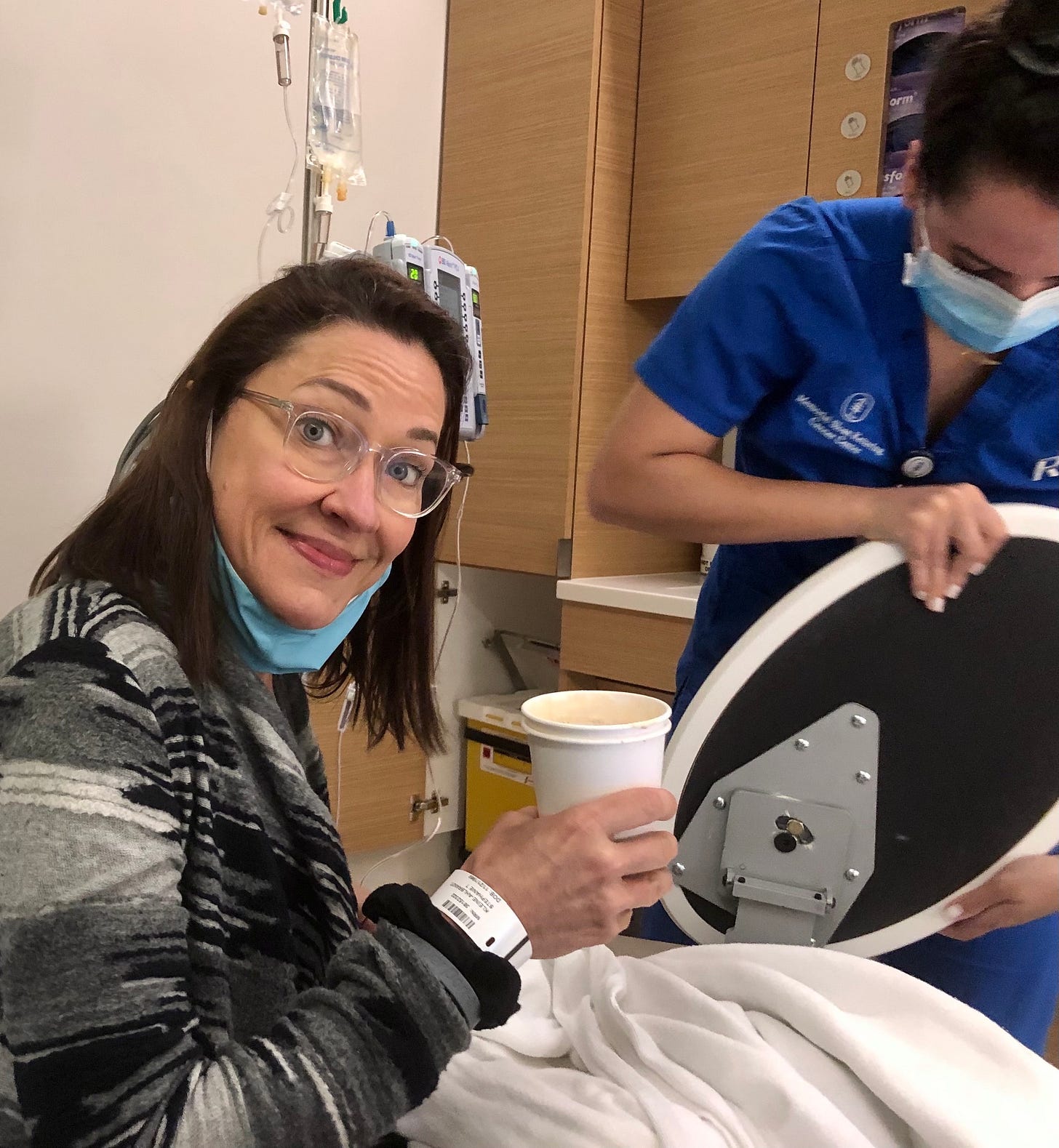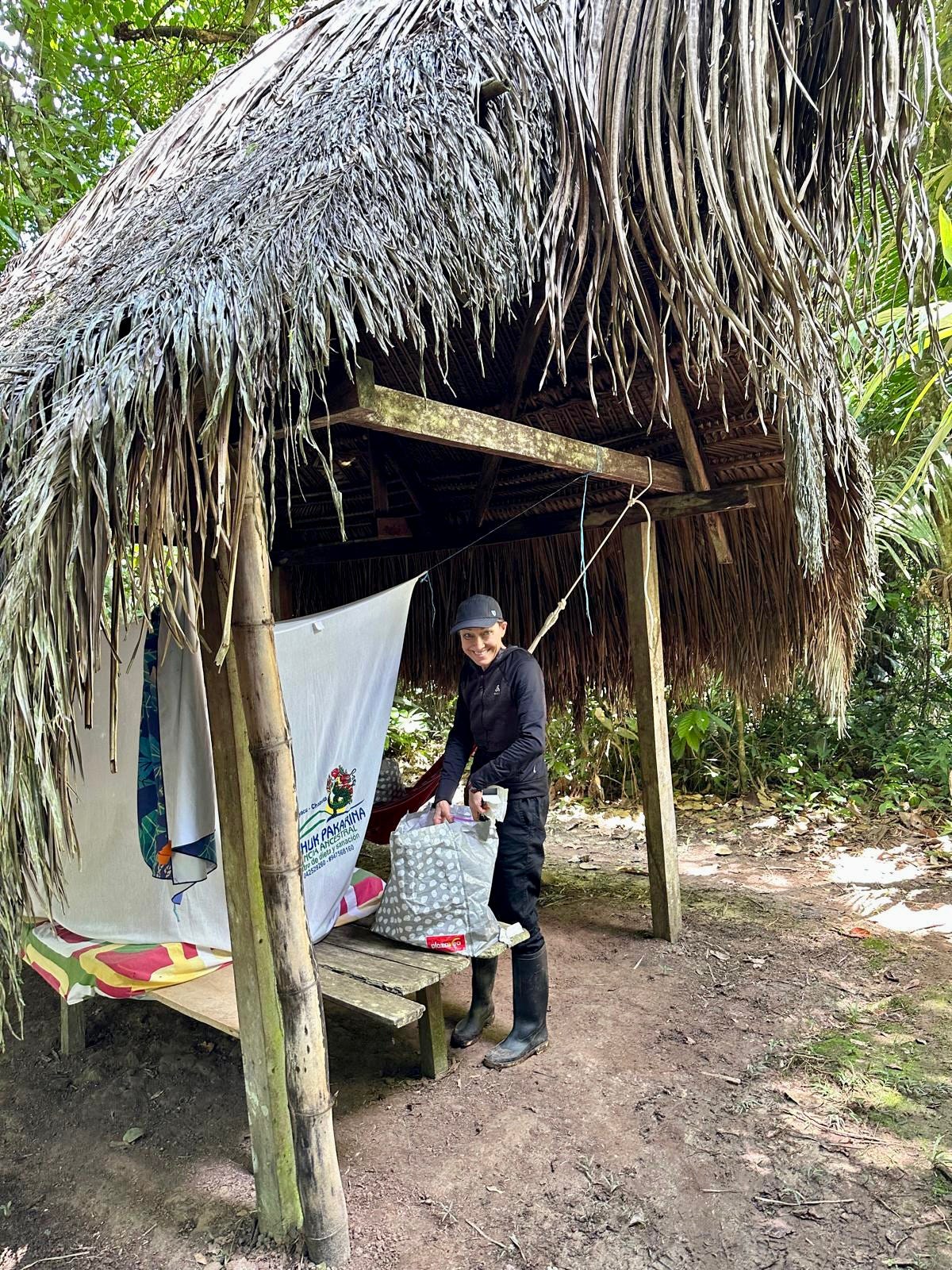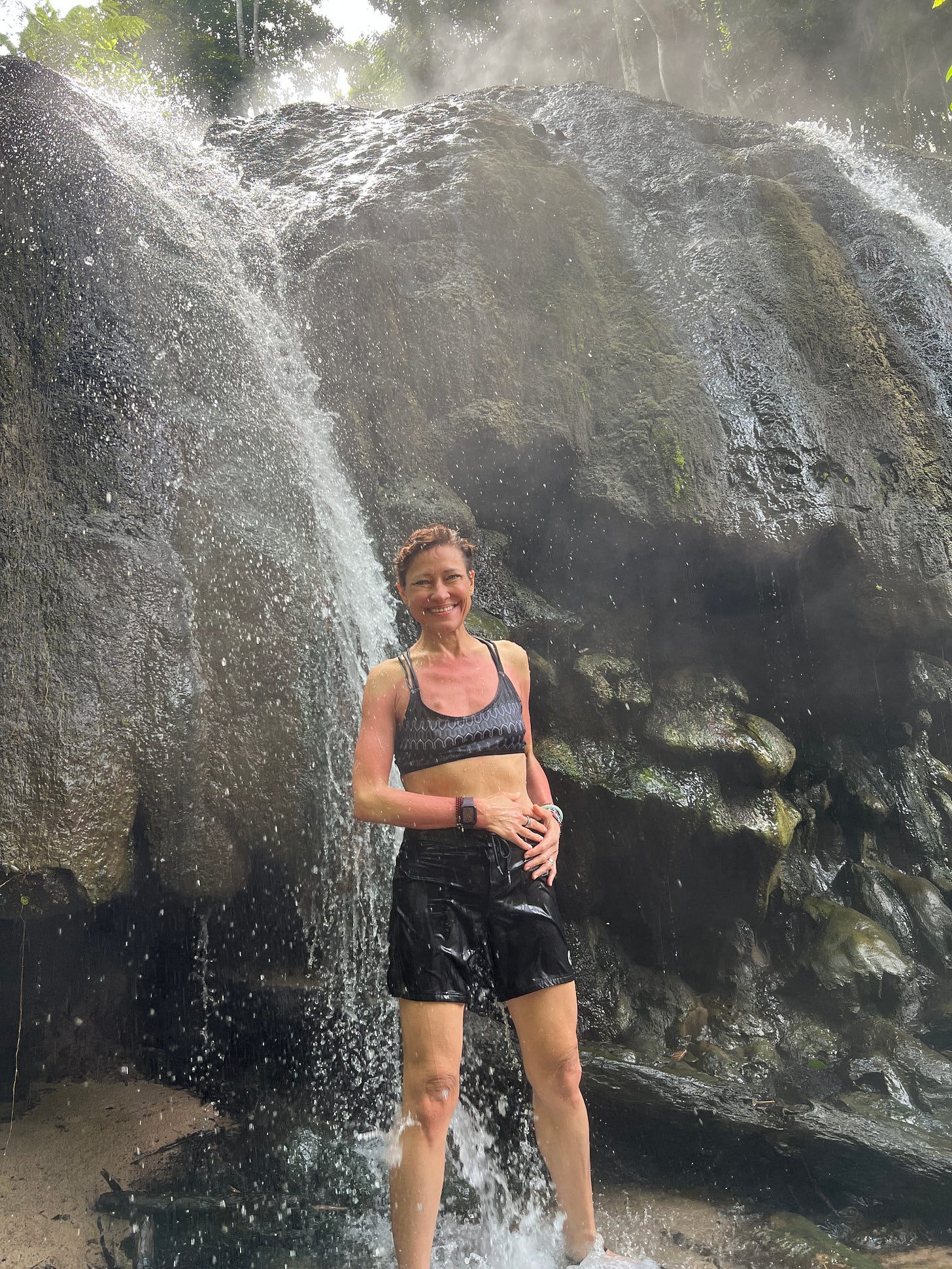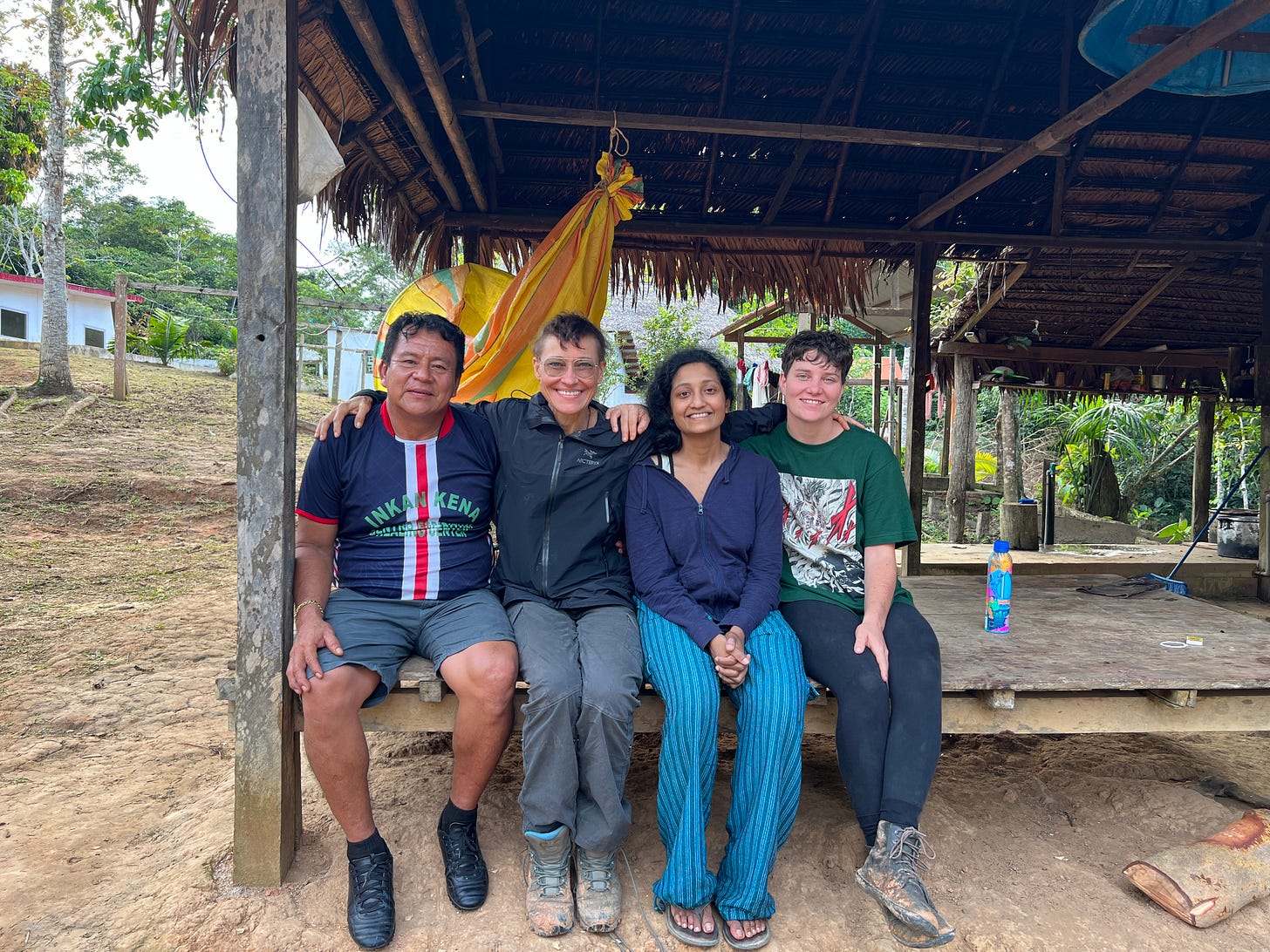Where Science Meets Ceremony
Exploring the Threshold Where Modern Oncology Meets Ancient Healing
Today I find myself walking a path that stretches between two very different worlds: modern oncology and ancient healing traditions. On one side, there’s chemotherapy, clinical trials, targeted therapies. On the other, acupuncture needles placed with quiet precision, meditation cushions worn soft with time, and the sacred rituals of indigenous medicine. Somewhere in the middle, I’ve begun to stitch together a form of healing that makes space for all of it.
This series isn’t about choosing one over the other. It’s about making room for the full spectrum. About recognizing that the body doesn’t exist in isolation from the mind, or the spirit, or the stories we carry. That healing—real healing—rarely comes from just one direction.
As I navigate this unpredictable illness, I’ve been drawn to the edges, to the spaces where things don’t quite fit into categories. I’m not seeking magic cures. I’m seeking meaning, connection, and care that feels whole. Some of what I’ve tried is now embraced by major hospitals; some of it still exists far outside the realm of what most oncologists would discuss in any treatment plan.
Through these pages, I’ll share what I’ve found—what’s helped, what’s unsettled me, and what has quietly transformed the way I understand health and illness. Not as an expert. Just as someone who’s still here, still learning, and still listening for what might help heal not just the body, but the rest of me too.
Western medicine
I have to laugh a little when I return from a plant medicine dieta in the Peruvian Amazon, only to have my doctors attribute my progress entirely to their interventions. To be fair, they’ve earned the credit—they’ve played an essential role in keeping me alive. Over the past few years, I’ve assembled what can only be described as an all-star team of cholangiocarcinoma specialists, with anchors in New York, Texas, and California. Their collective expertise has opened doors to treatments I wouldn’t have otherwise known existed.
(Let’s just say one of my favorites may have made a cameo with me in a PBS documentary.)
Beyond that core team, I regularly consult with other leading oncologists and researchers—always keeping one eye on the horizon, where the next line of treatment might appear. In this world, staying alive often means staying informed, asking better questions, and knowing when to shift course. It’s a high-stakes dance of timing, data, and trust.
My treatment path has covered a wide and often intense spectrum—from standard chemotherapy and immunotherapy to ablative high-dose radiation and a targeted medication designed to inhibit a specific genomic alteration (FGFR2) that fuels my cancer’s growth. These targeted therapies represent real progress in treating a rare and aggressive disease like cholangiocarcinoma. Still, they come with trade-offs: limited windows of effectiveness—usually just six to nine months—and side effects that range from inconvenient to punishing. And no one can say with certainty when resistance will set in.
I know how lucky I am to have assembled a world-class team early on. Their guidance has made it possible for me to stay one step ahead—or at least close enough to the edge to make informed decisions. This scaffolding of medical expertise has done more than extend my survival. It’s allowed me to push back against the gravitational pull of the hyper-medicalized cancer world—the one that threatens to swallow your identity whole. Like many patients, I’ve had to learn how to live with cancer, rather than inside it.
Venturing Beyond Conventional Medicine
And yet, alongside all the statistics, prognoses, and evidence-based treatments, there’s another part of my story—one I share less often. It’s quieter, harder to quantify, and far more personal. It’s the part where my healing has taken a different turn, one that prioritizes not just the body, but the full terrain of being: spiritual, emotional, psychological.
Some of the approaches I’ve turned to are beginning to find a foothold in major hospitals—acupuncture, meditation, Reiki. Others sit further out on the spectrum: shamanic rituals, plant medicine, breathwork. Depending on who you ask, they might be described as mystical, esoteric, or simply dismissed as "woo-woo." But these are the practices that have held my attention most deeply.
Before diving into those more unconventional corners, though, it’s worth pausing to look at the growing number of integrative therapies that have made their way into the halls of mainstream medicine—often quietly, but meaningfully.
Alternative healing practices complementing conventional medicine
More and more hospitals now offer what were once considered fringe therapies: acupuncture, Reiki, mindful movement, medical massage, meditation, nutrition counseling, aromatherapy. What used to be labeled “alternative” is steadily being woven into the fabric of conventional care.
At Memorial Sloan Kettering, I’ve experienced this integration firsthand through acupuncture. Each session is tailored not just through the lens of traditional Chinese medicine, but also informed by the clinical realities of my lab work—blood counts, treatment side effects, overall health. The result is something surprisingly fluid, even elegant. Watching Western and Eastern approaches work in tandem feels, at times, like witnessing a symphony—disciplines once thought to be at odds now playing in thoughtful coordination.
MSK’s acupuncture team is also at the forefront of research, studying how acupuncture can do more than reduce pain or nausea. Preliminary findings suggest it may help boost blood counts and strengthen immune cells—specifically lymphocytes and natural killer cells. It’s early-stage science, but it’s promising. And for many of us, it’s already making a difference.
Reiki, once dismissed as fringe, is now offered in more than 800 hospitals across the U.S., including Memorial Sloan Kettering. It’s a form of biofield therapy, based on the idea that healing can be supported by working with the body’s energy fields—something that still makes many in Western medicine raise an eyebrow, even as research quietly accumulates.
I first came to Reiki long before cancer entered the picture. In 2018, after a nostalgic (and ill-advised) attempt to revive my teenage gymnastics days ended in an ACL reconstruction, I began searching for gentler ways to support my healing. That search led me to a Reiki Master who had been quietly building bridges between energy work and academic medicine for decades—introducing Reiki into places like Harvard, Yale, the NIH, and New York Presbyterian/Columbia as early as the 1990s.
I earned my certification under her guidance. At the time, I had no idea this would become one of the through-lines in my life—a practice I’d return to not just for physical healing, but for grounding, presence, and meaning, especially once cancer rewrote the map.
Many hospitals now offer yoga and meditation as part of their wellness programs—a welcome shift that recognizes healing isn’t just clinical, but also deeply human. I’m grateful I found these practices long before my diagnosis, when they were still considered “adjuncts,” rather than essential tools for survival.
Of all the methods I’ve explored, meditation has become my anchor. It’s portable, free, and always available—on the exam table, in the waiting room, at 3 a.m. when the mind spirals. I attended my first silent meditation retreat in 2013, unsure of what I was seeking but certain something in me needed quiet. I left with a clarity I hadn’t known I’d been missing.
That retreat became the beginning of a deeper path. I later trained to teach meditation, thanks to the Mindfulness Meditation Teacher Certification Program (MMTCP), with the generous guidance of Tara Brach, Jack Kornfield, and
. Their teachings, along with those from the Search Inside Yourself Leadership Institute (SIY Global), have shaped not just my practice, but the way I move through illness, work, and love.In the end, weaving diverse healing practices into the fabric of mainstream medicine isn’t just progressive—it’s essential. It allows for care that is both rigorous and deeply personal, rooted in evidence while attuned to the whole human being. When we recognize the interplay between body, mind, spirit, and environment, we begin to treat more than disease—we begin to support life. And in doing so, we return agency to patients, inviting them to participate fully in their own healing.
Beyond the Bounds of Mainstream Medicine
Outside the walls of hospitals and clinics, beyond the polished vocabulary of oncology, lies a wide and often overlooked expanse of healing. Long before my diagnosis, I’d dipped a toe into that world. But cancer became the great accelerant, urging me to explore deeper and further—into practices many would call mystical, fringe, or simply unfamiliar. I found myself drawn into traditions both ancient and emergent: master plant dietas in the Amazon, holotropic breathwork, Ayurveda, traditional Chinese medicine, somatic therapy, EMDR, EFT, ecstatic dance, Internal Family Systems, and the quiet power of sound healing and shamanic journeys. These weren’t detours—they became part of the map.
Some of these explorations have been among the most transformative of my life. And yet, I recognize they fall well outside the comfort zone for many. They’re not just unconventional—they’re experiences people often hesitate to speak about, even with those they trust. Some of these practices are only legal in certain countries, requiring travel and a willingness to navigate unfamiliar terrain, both literal and emotional. For now, I’m not certain how much I want to share publicly.
I’ve spoken with close friends, particularly those who’ve walked similar paths. But I’ll never forget one conversation with a friend who’s also a doctor. I began describing an ayahuasca ceremony, and midway through, he grew quiet. Later, he confessed he’d physically moved the phone away from his ear, overwhelmed—not by disapproval, but by the intensity of the images I was recounting. It struck me then: even those who know us well can be shaken by the magnitude of these experiences. Sometimes, their weight can only be carried in silence or shared in fragments, gently.
At the same time, there’s been a striking resurgence in interest around psychedelic-assisted therapy—marking a shift in how we think about mental health care. Substances like psilocybin, LSD, and DMT are now the subject of rigorous clinical trials for their ability to address conditions where traditional treatments often fall short. The research is compelling. These compounds appear to catalyze profound, inward-facing experiences that can unlock breakthroughs in a single session—progress that might otherwise take years in talk therapy.
Importantly, these studies go beyond symptom management. They suggest the potential for deep, lasting psychological healing, with some participants reporting sustained benefits months after treatment. As this body of evidence grows, it's prompting a reexamination of what healing can look like—and expanding the toolkit of modern psychiatry.
Closer to home, ketamine clinics have been cropping up across New York City like mushrooms after a storm. Since the FDA’s approval of the ketamine-derived nasal spray Spravato, off-label ketamine therapy has become legal in every state for a range of conditions, bringing what was once fringe firmly into the realm of the mainstream.
Personally, I’ve been far more drawn to traditional healing practices rooted in long lineages—often directly connected to plants—than to the synthetic substances commonly used in both medical and recreational settings. The ways of the Shipibo-Conibo people of Peru, in particular, have deeply resonated with me. Their approach to healing is not just medicinal, but spiritual and cosmological: a richly woven system that integrates plant-based remedies, ceremonial rituals, and a worldview in which nature, spirit, and human experience are inseparably linked.
The Shipibo tradition differs profoundly from the world of laboratory-produced drugs. It is anchored in a holistic cosmology, where Ayahuasca is just one thread in a much larger web of plant-based medicine, spiritual practice, and communal knowledge. Unlike the Western tendency to reduce Shipibo healing to Ayahuasca alone, the tradition encompasses a vast pharmacopeia of Amazonian plants—most of them non-psychoactive—each serving a specific healing purpose. Ayahuasca, in fact, is often used diagnostically by the curandero or curandera, who then prescribes other plants based on the insights revealed. Central to the healing ceremony are the “icaros”—traditional songs that are believed to summon the spirits of the plants and guide the process. These melodies are not merely atmospheric; they are the medicine itself, shaping and directing the experience in ways both mysterious and deeply intentional.
Unlike laboratory-formulated drugs, Ayahuasca—within the Shipibo tradition—is not simply consumed for its pharmacological effects but engaged as part of a deeply introspective, often elemental process. Its impact is not limited to symptom relief; it invites the psyche into confrontation with what lies buried: old grief, stored rage, unacknowledged fear. What surfaces in ceremony is rarely tidy. Emotions emerge raw and unfiltered, often accompanied by physical purging or waves of release that feel as much spiritual as they are somatic. This is not passive medicine; it is participatory and immersive, requiring the drinker’s full presence. Rather than numbing pain, it opens space to reexamine it—guiding a kind of inner excavation that Western pharmaceuticals, for all their precision, rarely attempt. In this way, Ayahuasca offers not a cure, but a reckoning—one that can, in its own unruly and sacred logic, move the soul closer to healing.
The Shipibo-Conibo people carry a rich artistic tradition woven into every aspect of their lives. Their pottery, textiles, and body art are etched with intricate geometric patterns—designs that are far more than aesthetic. These are visual prayers, maps of the unseen, reflections of visions received in ceremony. Each pattern encodes a kind of spiritual language, speaking to the flow of energy in the universe and the fundamental interconnection of all life. Far from decorative, this art expresses their cosmology—an embodied reminder that healing, like beauty, moves in patterns deeper than the eye can see.
Integrating traditional, plant-based healing practices into my broader treatment has opened doors to realms of consciousness I hadn’t known existed. These experiences have been anything but casual—marked by vivid visions and encounters with emotions buried deep in the body’s memory. Woven together with more familiar modalities, they’ve expanded my understanding of what healing can look like—revealing layers of insight into the delicate threads connecting mind, body, and soul. For now, I’ll pause here, as even Substack has its limits. But there’s more to come.
In a future post, I’ll turn to another pivotal part of my healing path: holotropic breathwork. This practice has helped me face the emotional terrain I once avoided—especially the ways I’ve leaned into anger as a shield against the vulnerability of sadness. Over time, breathwork has offered a powerful entry point, not just to release anger, but to uncover the tender emotions beneath it. The result has been nothing short of transformative. More on that soon.










it is imperative that we walk alongside stephanie on her remarkable journey